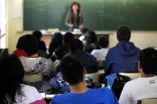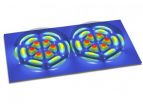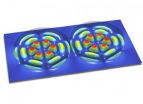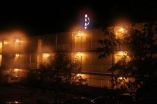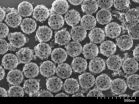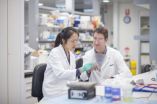(Press-News.org) Children's marks at school influence the likelihood of them abandoning their studies, but the effect varies according to their social background: among students with poor marks, those from a higher social class have more opportunities to raise their marks than children of low-skilled workers. This is according to a study carried out by researchers from the National University of Distance Learning (UNED) and the European University Institute.
"The study deals with dissociating the effect of the marks (considered the 'primary source' of educational results) from other processes which, linked to the socio-economic status of the parents, determine the educational opportunities of individuals. This is the first time such a study has been carried out in Spain, a country where the scarcity of educational statistics is very serious compared to others in the European Union," Héctor Cebolla Boado, UNED researcher and co-author of the research reports, explains to SINC.
According to its results, school performance is not interpreted in the same way for individuals from different social backgrounds. There is an offsetting effect by which students from a higher social class are more likely to go on to further education than those from a lower social class, even though their marks are low.
"Inequality stemming from social background is greatest among students who gain lower marks. Higher social classes find strategies to offset their children's performance problems and, when things go badly at school, get second chances that children of the less fortunate do not have. We call this an offsetting effect," states the scientist.
This means that the higher social class of the parents offsets the fact that they are poor students. "They fail, in short, but they do so less than would be expected if they were children of parents with less resources. This implies that not everything comes down to school performance. There are family processes which are not usually dealt with by public policies which have a significant impact," Cebolla points out. This inequality gradually decreases as the students' scoring ability increases.
"The likelihood that a student continues with their studies after 16 years of age if they come from a more privileged class when their marks are low is 56%, compared to 20% for children from homes where the main breadwinner is an unskilled worker," the study claims.
Of the over 4,000 students included in the survey, 88% of children of managers and professionals continue on to further education, whereas 70% of labourers and 44% of those born into families of unskilled workers leave school at the age of 16.
On the other hand, 61% of students from labourers' families and 48% of those from the unskilled working class stated that their marks were sufficient or poor. Among the children of managers and professionals only 29% identified their marks as such.
Statistical underdevelopment in education
Data from the Organisation for Economic Co-operation and Development (OECD) indicates that Spain is one of the countries with the highest rates of school dropout in Europe, yet educational statistics allowing the causes of this phenomenon to be known are few and far between. "We suffer some sort of statistical underdevelopment in education. There are no longitudinal or cohort studies like there are in other countries," states the researcher.
The Autonomous Regions produce some data of this kind but it is not usually published for "open and unlimited analysis." The expert believes that this is due in part to "a lack of tradition which links policies and scientific evidence."
In this sense, it is worth noting that the National Institute for Educational Assessment has started to apply a completely new policy of openness and transparency. Now, the researcher states, it just needs the Autonomous Regions to follow suit and for all administrations to work together to produce a longitudinal study which follows students through from the start of their primary education to the end of their secondary education at the very least.
"School dropout rates are the result of very complex processes, some of which are very subtle, which make it very difficult to deal with through current public policies. What seems to gather most consensus is that pre-school education (involving a blanket stimulus for the abilities of the children) is the most efficient tool in terms of cost and benefits for educational opportunities to be the same between children of the most and least advantaged. All in all it is unthinkable that this measure may even eradicate the disadvantage of the less privileged," concludes Cebolla.
INFORMATION:
References:
Fabrizio Bernardi y Héctor Cebolla. "Social Class and School Performance as Predictors of Educational Paths in Spain" REIS 146: 3-22. doi:10.5477/cis/reis.146.3
Social inequality intensifies amongst low-scoring pupils
2014-06-17
ELSE PRESS RELEASES FROM THIS DATE:
Strange physics turns off laser
2014-06-17
Inspired by anomalies that arise in certain mathematical equations, researchers have demonstrated a laser system that paradoxically turns off when more power is added rather than becoming continuously brighter.
The finding by a team of researchers at Vienna University of Technology and Princeton University, could lead to new ways to manipulate the interaction of electronics and light, an important tool in modern communications networks and high-speed information processing.
The researchers published their results June 13 in the journal Nature Communications (Ref. 1).
Their ...
Study: In wild yak society, moms are the real climbers
2014-06-17
NEW YORK (June 17, 2014) – A new study led by the Wildlife Conservation Society says that in wild yak societies, it's the mothers that are the real climbers. The study found that mothers with young venture on steeper terrain and slightly higher elevation than either males or females without young.
The authors of the study expect that this strategy is an adaptive way to avoid predators and to access more nutritious food. Wild yaks are an endangered species occurring only on the Tibetan Plateau and closely related to North American bison.
The study, which appears in ...
Promising T cell therapy
2014-06-17
This news release is available in German. The cells of the human immune system are created from special stem cells in the bone marrow. In diseases affecting the bone marrow, such as leukemia, the degenerate cells must be destroyed using radiation or chemotherapy. Subsequently, the hematopoietic system has to be replaced with stem cells from the blood of a healthy donor. Because of the resulting temporary weakening of the immune system, patients are more exposed to viruses that would normally be warded off.
The cytomegalovirus (CMV), which can cause serious damage to ...
Laser physics upside down
2014-06-17
This news release is available in German.
Sound waves fade, water waves ebb, light waves are dissipated by a wall. The absorption of waves is a very common phenomenon. But only recently have physicists realized that amazing new possibilities are opened up, when this energy loss, rather than being seen as an annoying nuisance, is actually considered a desired effect. At the Vienna University of Technology, a system of two coupled lasers has been created, in which wave dissipation leads to a behaviour completely contrary to intuition: additional energy can switch it ...
Research at Granada finds that the eye's optical quality deteriorates after alcohol consumption
2014-06-17
A study conducted by the University of Granada has scientifically proven that alcohol consumption markedly impairs night-vision because it increases the perception of halos—luminous circles—and other visual night-time disturbances. Moreover, this deterioration of vision is significantly greater in subjects with breath alcohol content in excess of 0.25mg/litre—the legal limit for driving in Spain and other countries and, also, that recommended by the World Health Organization (WHO).
Researchers from the Laboratory of Vision Sciences and Applications conclude that alcohol ...
Does the moon affect our sleep?
2014-06-17
Popular beliefs about the influence of the moon on humans widely exist. Many people report sleeplessness around the time of full moon. In contrast to earlier studies, scientists from the Max Planck Institute of Psychiatry in Munich did not observe any correlation between human sleep and the lunar phases. The researchers analyzed preexisting data of a large cohort of volunteers and their sleep nights. Further identification of mostly unpublished null findings suggests that the conflicting results of previous studies might be due to a publication bias.
For centuries, people ...
How does a tree know it's time to grow again?
2014-06-17
Winter takes its toll on living things. To protect themselves from the elements, bears hibernate, and trees go dormant. Biologists have observed what happens when trees become dormant, but up to now, they haven't understood the underlying genetic mechanisms that enable them to start growing again.
Led by molecular geneticists from Michigan Technological University a gene has been identified and characterized that tells a poplar tree when winter ends and a spring growing season begins. Victor Busov, a professor in Michigan Tech's School of Forest Resources and Environmental ...
Long-term study suggests ways to help children learn language and develop cognitive skills
2014-06-17
Examining factors such as how much children gesture at an early age may make it possible to identify and intervene with very young children at risk for delays in speech and cognitive development, according to a new study by researchers at the University of Chicago.
The research by leading early learning scientists looked at children from a wide variety of backgrounds, including those from advantaged and disadvantaged families, and those who had suffered brain injury. Their work was published in an article, "New Evidence About Language and Cognitive Development Based on ...
Nanoshell shields foreign enzymes used to starve cancer cells from immune system
2014-06-17
Nanoengineers at the University of California, San Diego have developed a nanoshell to protect foreign enzymes used to starve cancer cells as part of chemotherapy. Their work is featured on the June 2014 cover of the journal Nano Letters.
Enzymes are naturally smart machines that are responsible for many complex functions and chemical reactions in biology. However, despite their huge potential, their use in medicine has been limited by the immune system, which is designed to attack foreign intruders. For example, doctors have long relied on an enzyme called asparaginase ...
Gene 'switch' reverses cancer in common childhood leukaemia
2014-06-17
Melbourne researchers have shown a type of leukaemia can be successfully 'reversed' by coaxing the cancer cells back into normal development.
The discovery was made using a model of B-progenitor acute lymphoblastic leukaemia (B-ALL), the most common cancer affecting children.
Researchers from the Walter and Eliza Hall Institute showed that switching off a gene called Pax5 could cause cancer in a model of B-ALL, while restoring its function could 'cure' the disease.
Institute researchers Dr Ross Dickins and Ms Grace Liu led the study with institute colleagues and ...
